18 March 2012
Fossil interlude: Eighteen Mile Creek, New York
Posted by Jessica Ball
The weather has been freakishly nice for March in Buffalo, so yesterday I decided to chuck any ideas of getting work done and went fossiling with a friend instead. The area where I live sits right on top of the Devonian Onondaga limestone, so I’m already surrounded by a very fossiliferous unit (it’s full of things like coral and brachiopods and crinoids). But for a special locale, it’s worth it to head down to Eighteen Mile Creek, which flows into Lake Erie about 12 miles southwest of Buffalo.
The scenery is lovely here – to get to the fossil site, you take a short hike through woods that border the creek and the marshy areas at the lake outlet. But the best part is at the end of the walk: Trilobites!
Eighteen Mile Creek is one of the best places in Western NY to find trilobites (and other fossils as well). It exposes the Wanakah Shale, another Devonian unit. Here’s what UB’s Geology Department website has to say about it:
“At its type locality north of Eighteen Mile Creek along Lake Erie shore, the Wanakah Shale consists of about 19.8 m of medium gray, soft, fossiliferous shale and shaly mudstone with several calcareous bands and zones of larger concretions. The highest beds of the Wanakah Shale exposed just below the Tichenor Limestone contain a high diversity fossil assemblage termed the Demissa and Stictopora beds of Grabau (1898, 1899). These units yield over 80 species of macrofossils and are particularly rich in brachiopods and bryozoans.
“At Eighteen Mile Creek, the Tichenor Limestone is a resistant, 30-40 cm thick ledge-forming crinoidal biospharite and biomicrite. It contains numerous large rugose corals (Heliophyllum, Eridophyllum) and heads of the tabulate coral Favosites hamiltoniae, large crinoid columns, fenestellid bryozoans and brachiopods. The large bivalves Plethomytilus, Actinopteria, and Goniopora, are locally abundant in the upper surface of the Tichenor Limestone.”
To give you a better idea of the stratigraphy, here’s a diagram of local Devonian units:
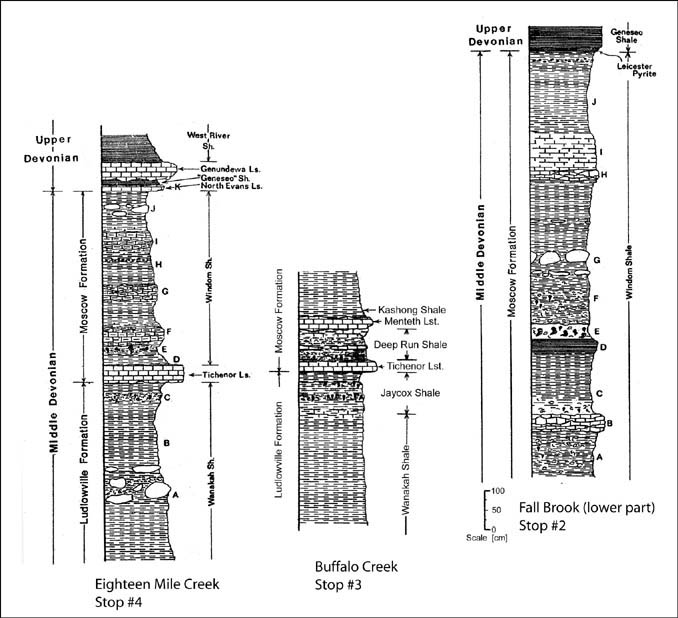
Courtesy of Dr. Jorg's sed/strat website (http://www.geology.buffalo.edu/contrib/people/faculty/gly216trip.htm)
Walking along the beach is one easy way to find fossils, but you can also bring along a rock hammer and split chunks of the shale apart (this tends to be where the trilobites show up). We did both, and here are some of our finds:
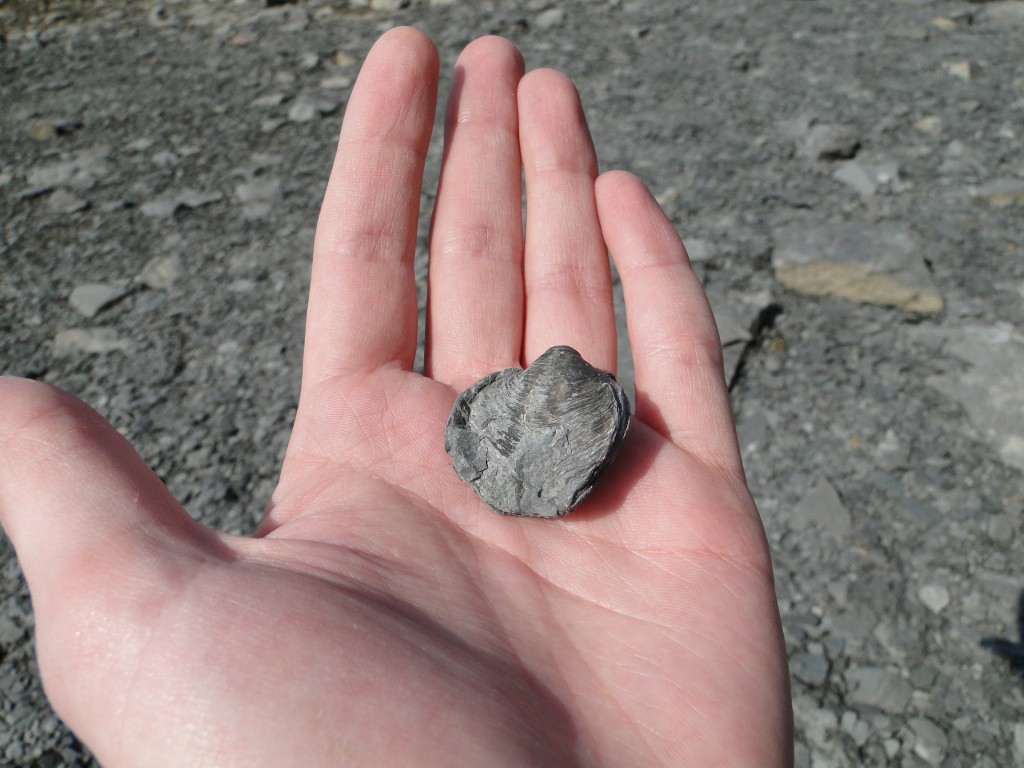
Brachiopods are really easy to find on the beach, since they seem to stand up to wave action pretty well. I think this is Athyris spiriferoides
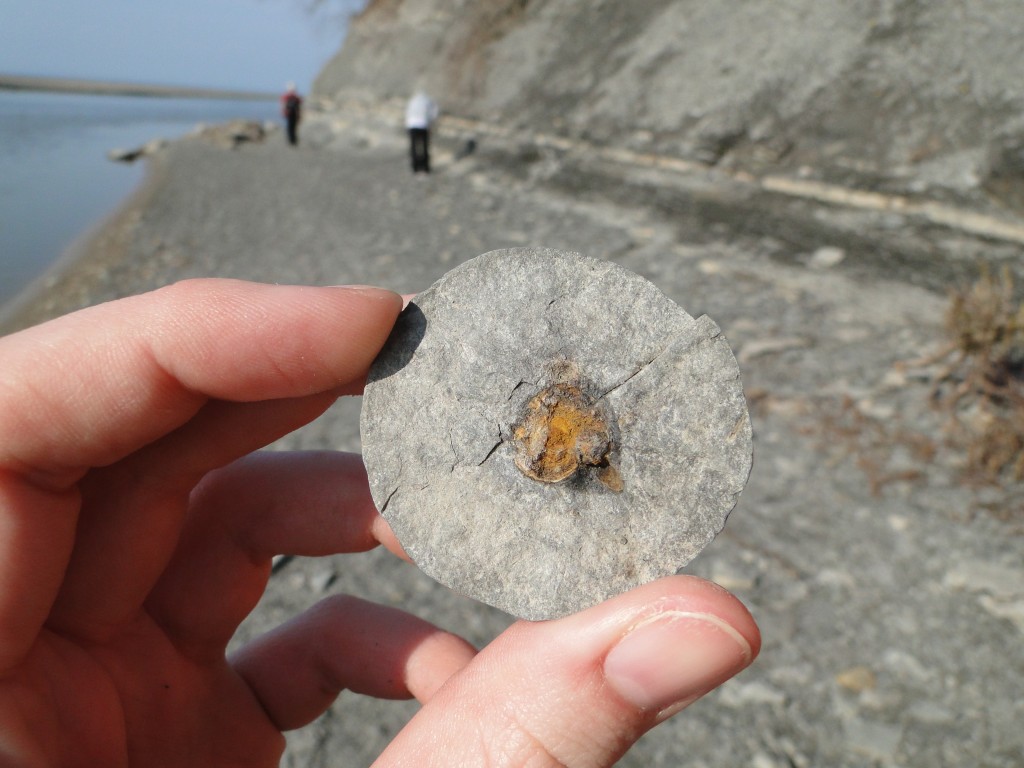
A slice of a rugose coral - it looks a little bit like a really big crinoid stem from this angle, but the crinoids here don't get that large.
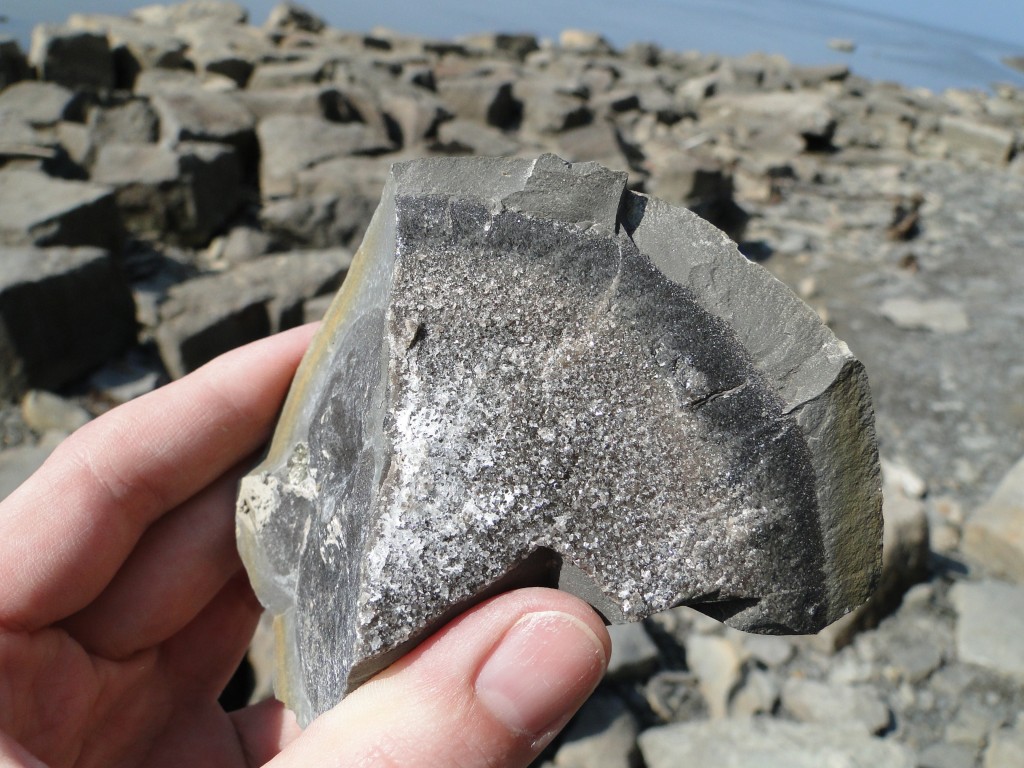
There are a lot of concretions in the shale, and they're usually a little crystalline at the center. The color bands are also really common.
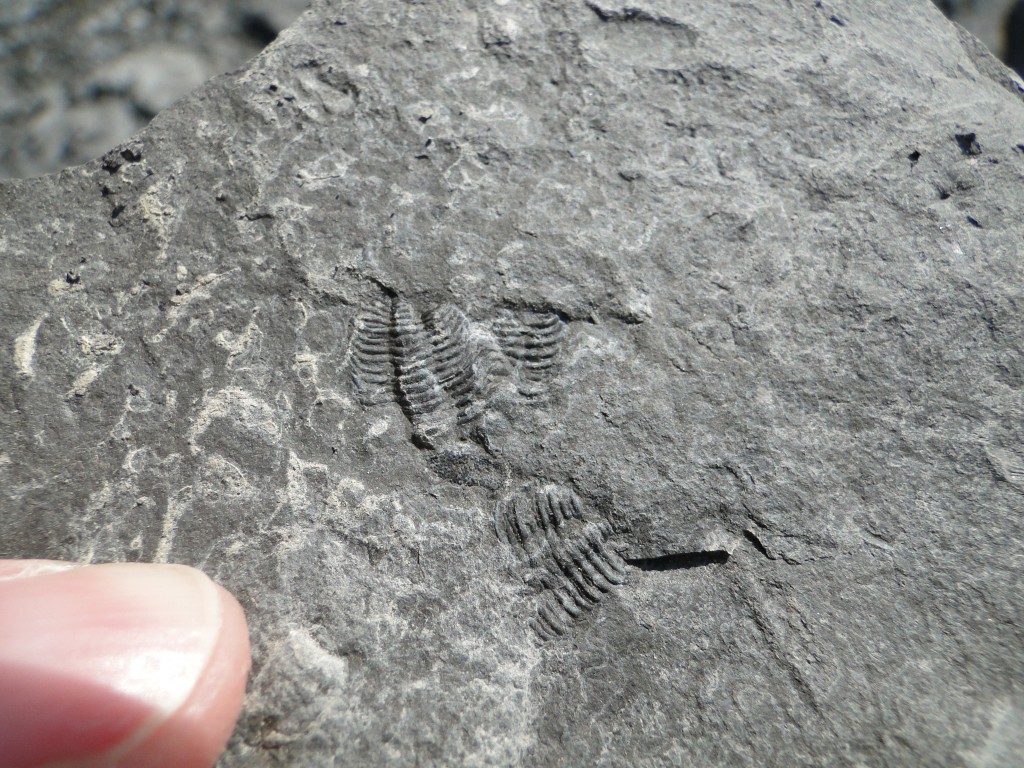
Despite the fact that it's shale here (and presumably a low-energy environment), it's hard to find trilobites that aren't broken up. So you see a lot of trilobite butts (pygidiums? pygidii?)
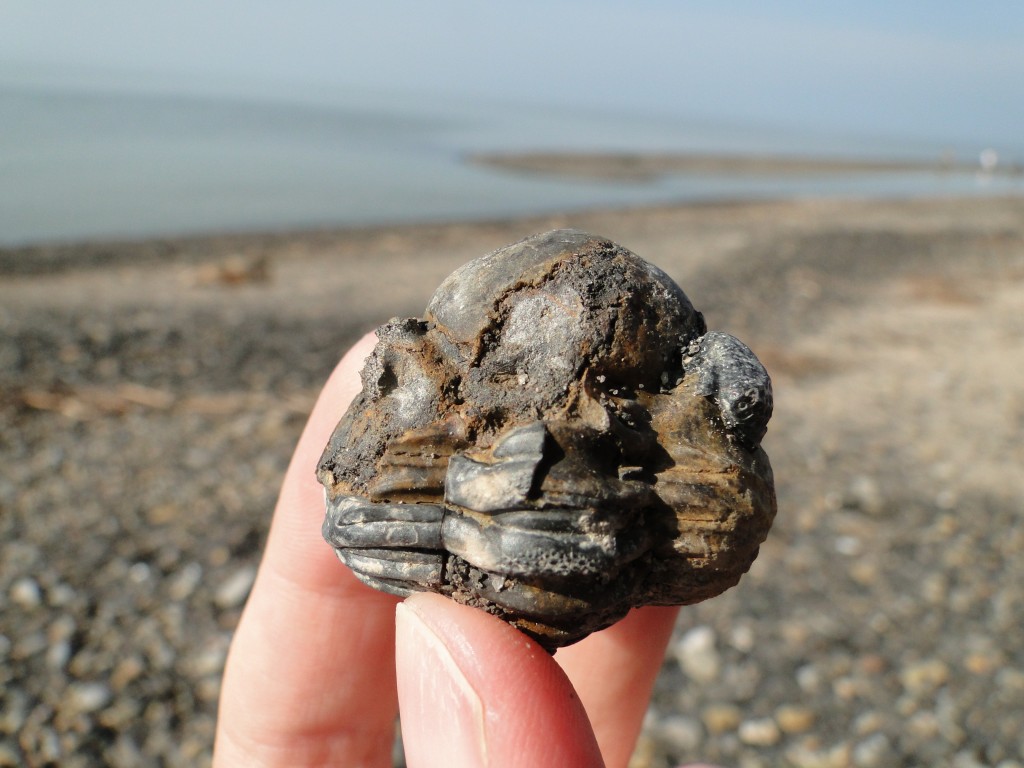
But just occasionally, you find a really awesome trilobite in one piece - like this one! A Phacops rana rana, if this website is correct: http://www.fossilguy.com/sites/18mile/
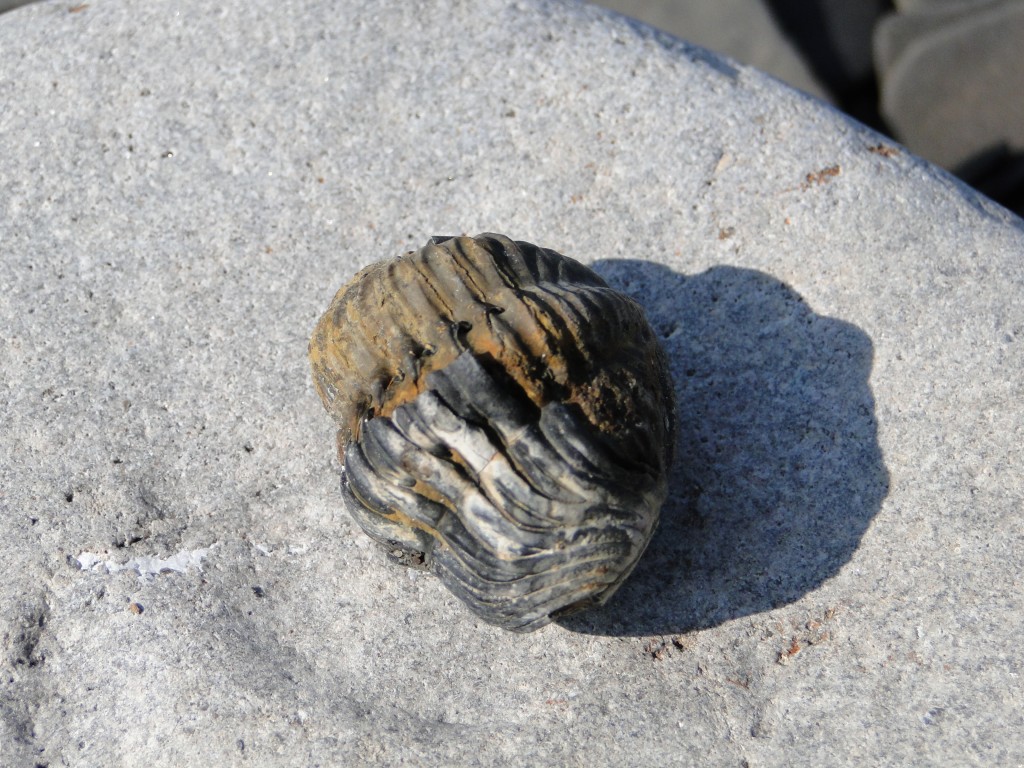
I think he's a little pyritized, which would explain why he stuck together when all his buddies were going to pieces.

Oxide minerals (maybe pyrite?) tend to show up in this botryoidal form here. These are all over the beach as well, and I think they can be just as interesting as the fossils!

Because Buffalo is an industrial town, there are also some interesting remnants of that industry on the Lake Erie shoreline, like these glassy bits of slag.
For more information on Western NY Geology (and fossiling at Eighteen Mile Creek and other locales), check out these links:
- Geology of Western NY Guidebook (a bit old, but worth a read!)
- Devonian Stratigraphy and Fossil Assemblages of Western NY
- Fossilguy.com’s page on Eighteen Mile Creek collecting



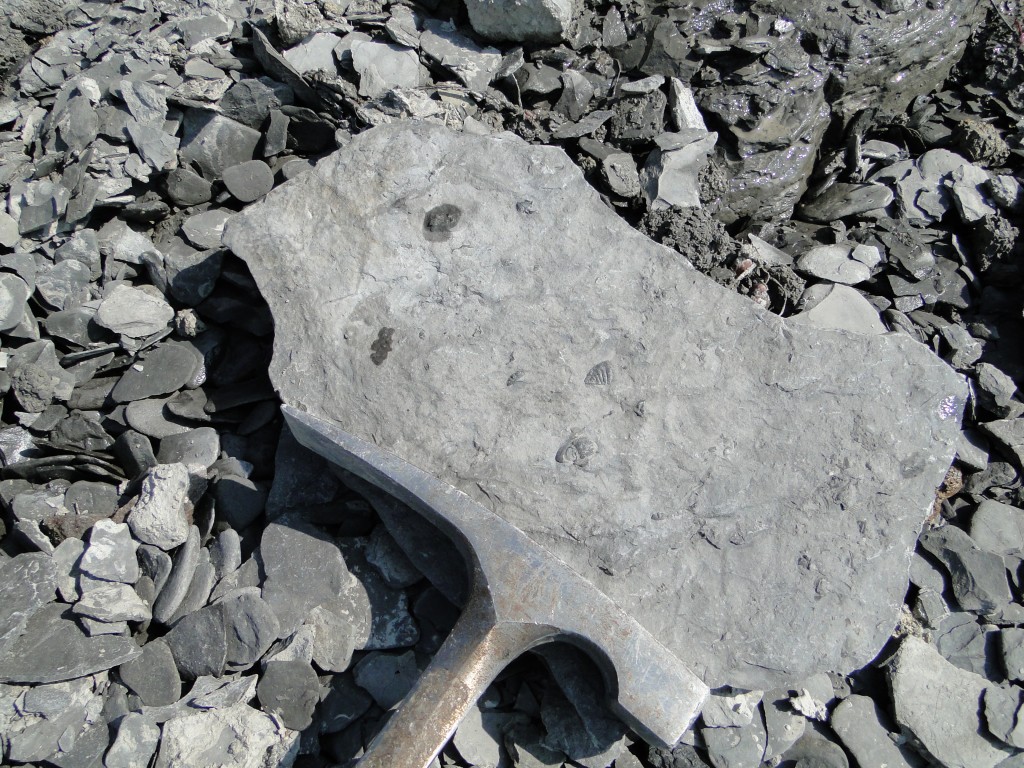
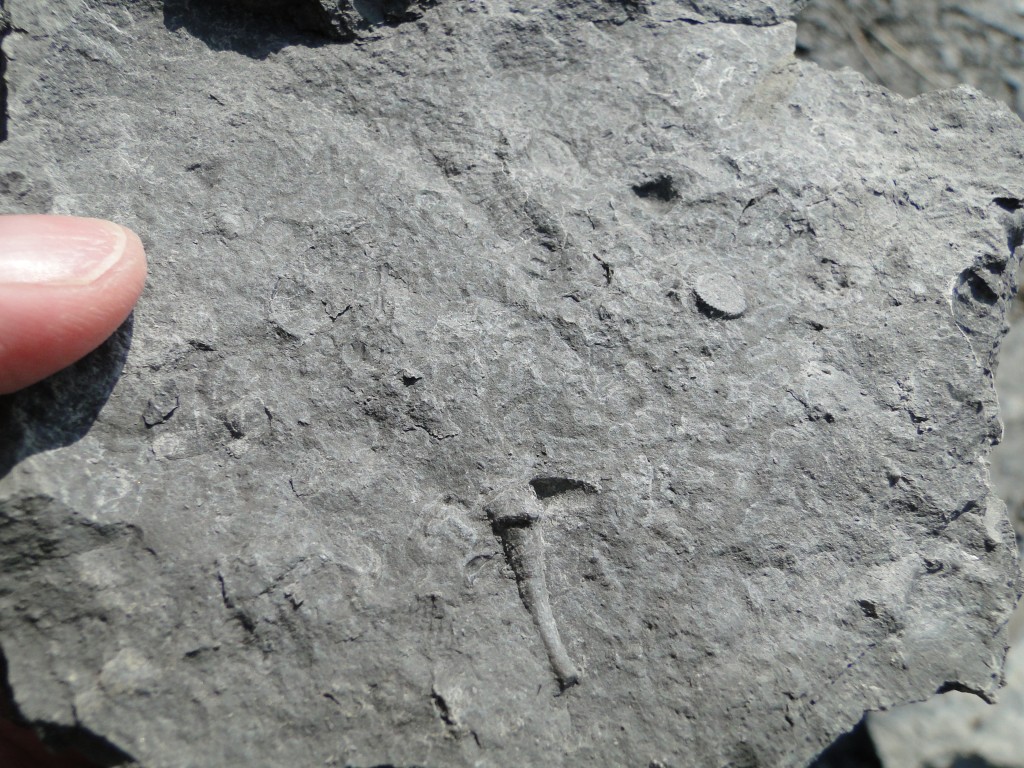
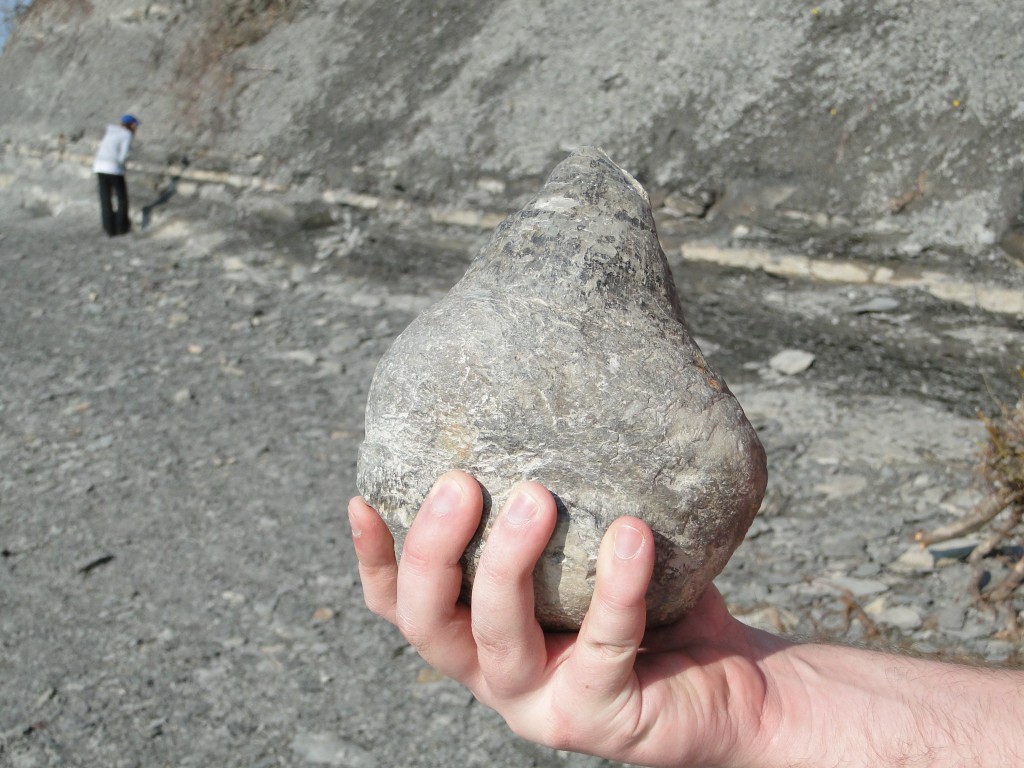
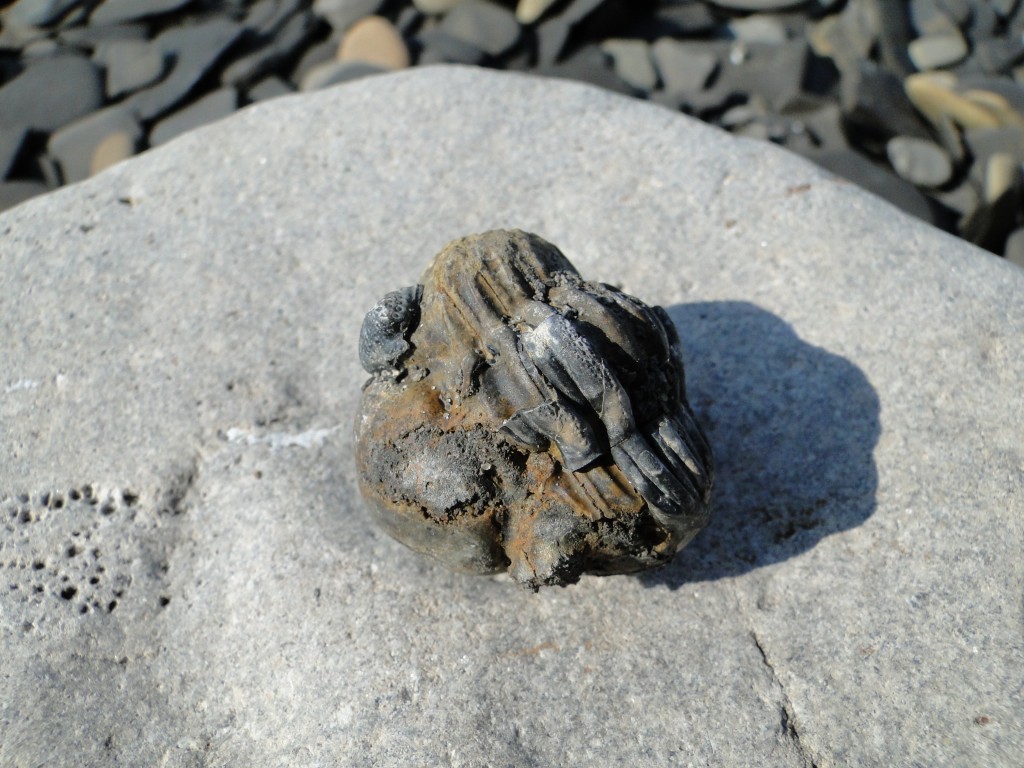

 Jessica Ball is a volcanologist at the U.S. Geological Survey, researching volcanic hydrothermal systems and stability, and doing science communication for the California Volcano Observatory. She previously worked at the Geological Society of America's Washington DC Policy Office, learning about the intersection of Earth science and legislative affairs. Her Mendenhall postdoc and PhD focused on how water affects the stability of volcanoes, and involved both field investigations and numerical modeling applications. Her blogging covers a range of topics, from her experiences in academic geosciences to science outreach and communication to her field and lab work in volcanology.
Jessica Ball is a volcanologist at the U.S. Geological Survey, researching volcanic hydrothermal systems and stability, and doing science communication for the California Volcano Observatory. She previously worked at the Geological Society of America's Washington DC Policy Office, learning about the intersection of Earth science and legislative affairs. Her Mendenhall postdoc and PhD focused on how water affects the stability of volcanoes, and involved both field investigations and numerical modeling applications. Her blogging covers a range of topics, from her experiences in academic geosciences to science outreach and communication to her field and lab work in volcanology.
Nice enrolled Phacops! Well done.
In the pic with the three partials, it appears that, not only are pygidia exposed, but also the thoraxes. And, on the top specimen, part of the cephalon, too.. A little prep work on the piece might reveal a lot more. I have never collected 18 Mile, but I hope to, someday. Great stuff!
I especially like the third photo of the Phacops — wonderful, what a neat find.
Nice fossiling site! Makes me want to take a trip to Buffalo…
Anytime! People rarely come to visit me, so I’m always happy to have folks stay over. And we’re not totally iced over right now, which is a huge surprise. It’s practically summer!
Once while in Dunkirk at my wife’s mom’s house, and after exhausting myself trying to find anything in the Dunkirk Shale at the lake there, I took my daughter and nephew up to that area to see if we could find some “stuff” like that. Without a good map, we couldn’t find the trail down to the shore there, so I’m glad to see your photos of that locale. One of these days, we’ll have to hit that spot. Great post. (Oh, and for summer treats after fossil-collecting, you can’t beat the “Super Freeze” on Rte. 5 in Derby – especially the decor inside!)
It is too cold for snorkeling now but the near shore at 18 mile is a great place to putter around on a calm day. The wave action cleans off the matrix and leaves some nice clean fossils laying on the bottom. I found a perfect blastoid once by flipping over flat stones that were covered with sea weed on the top and wave scrubbed on the bottom. On the weather: I took a group of home schoolers there once at the end of March, the shore ice was stacked up like it was somewhere in the Arctic.
Nice to see a new 18 mile creek fossils web site from Jessica. The cliffs area is practically in my front yard. They took away my free beach access, but I can still find a way down there. Anyway, it`s a great place for fossiling –it took me a few years to find a near perfect complete trilobite, but it was well worth it. Thanks to Jessica, I found out that the large `round rocks` are rugose coral. Always something to learn.
I wish I could go check it out. I’ve been interested in paleontology for such a long time
Brings back memories of 50+ years ago when I was a kid growing up in Hamburg. We used to pick up fossils at the Hamburg Town Beach. Wish I still had some but the mineral collecting won out and I am still at that.
This is a quiz–does anyone know why it`s called 18 mile creek? Leave an answer if you think you know.
18 Mile Creek is supposedly named because it is 18 miles from downtown Buffalo. Our home is on the bank of the creek about a mile from the mouth. My wife and I canoe, kayak, and collect fossils, rocks, driftwood and beach glass at the mouth of it on Lake Erie.
My guess would be that it is 18 miles from the Erie canal exit into Lake Erie.
I am in town and would really love to go to the beach at the beginning of the Creek. How do i get directly onto the beach, or close to it?
Carol – if you approach from Rt. 5 (Lake Shore Road), there is a parking area just under the bridge. For the beach, you’ll want to cross to the other side of the bride, where there is a trail (usually blocked off by a chain). Take the trail downhill and follow it along the stream. You’ll need to cross to the right (north) side of the stream at some point, then keep walking until you get to the beach.
Thanks so much for this information. I am in Buffalo for work and brought boots, hammers, and chisels. I plan to go Thursday (June 13) at around 5:30. I have wanted to come here to hunt for fossils for years.
Glad you found it useful! Just a warning if you check this today, we’re under a flood watch and you probably shouldn’t chance being around the creek or the lakeshore until much later today or tomorrow. It’s going to be pretty wet!
Yes, that was a raging river. One foot from the bank it was already close to the tops of my boots. The path is also really fenced off with “posted” signs on it. We went to Penn Dixie instead. I had e-mailed and the leader wrote back and even sent his cell phone number and he gave us good advice. We had a really fun time. Thanks!
Good article! I am interested in heading up to Buffalo to find some trilobites, could you recommend a location along 18 mile creek? Thanks
Most people head out to the mouth of the creek, where it empties into Lake Erie – the beach there is a fairly popular hiking/fishing/fossiling spot. A lot of the cliffs upstream are part of private property, so I try to avoid those.
Nice article. I found it while searching on trilo fossils. Been looking to start branching out from mostly fossil shark teeth collecting and get some of these cool inverts